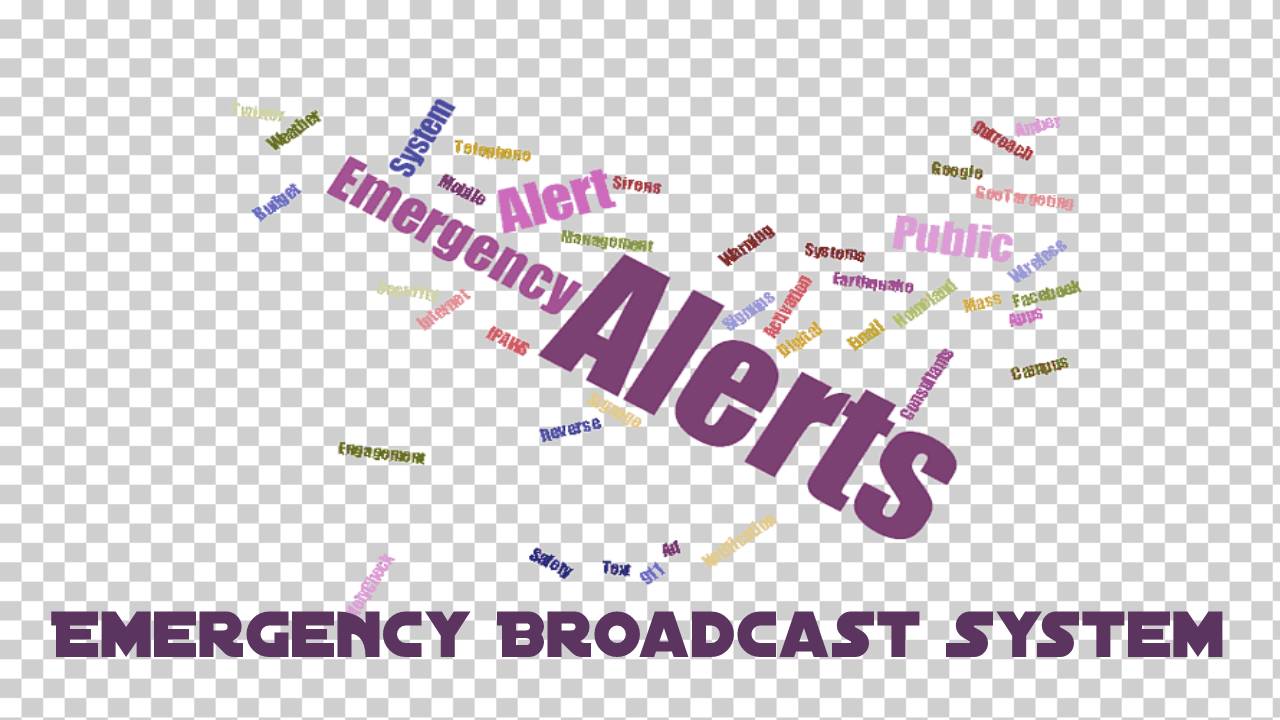Emergency Broadcast System
Emergency Broadcast System (EBS)was launched in 1963 during the Kennedy administration to allow the President to address the entire country in an emergency.
FCC, FEMA, and the National Weather Service (NWS) expanded EBS subsequently through inter-agency efforts.
The system test lasted 35 to 40 seconds, with the TV channels usually showing the test sample and announcing that the test was in full swing.
It is a loud, piercing, unpleasant tone, after the familiar phrase: “This is a test of the emergency
transmission system. If this were a real emergency”.
In the occurrence of an actual emergency, it will give civil protection instructions to the population.
The system is never used in a nuclear emergency, although it was activated more than 20,000 times between 1976 and 1996.
It broadcasts emergency messages and warnings of dangerous weather events.
All radio and television stations must run the weekly attention signal and check test scripts at least once a week on arbitrary days and times between 8:30 am and local sunset unless they activate EBS for an emergency.
FEMA has just conducted a nationwide test of the emergency broadcast system
The (FEMA) Federal Emergency Management Agency has conducted the latest emergency warning system (EAS) test on every television and radio in the United States.3
Futhermore, they Launched the alert test on television and radio at 2:20 pm ET (11:20 am PT).
“THIS IS A TEST of the national emergency alert system,” the message says.
“If this were a Real Emergency, the tenor at the beginning of this message would be followed by an
official announcement. No action required. ”
EAS FEMA is one of several existing systems for mass public emergency alert.
Moreover, the first nationwide test was conducted in 2011 and performed tests multiple times until October 2018.
As portable devices have become more common in the US population than televisions and radios, FEMA has begun work on a wireless emergency system to send notifications to smartphone users.
It allows the incumbent President to send messages to all phones in the United States in a national emergency.
However, its first test last year after a short delay following Hurricane Florence on the east coast.
However, today’s EAS test consists of measuring the system’s readiness to issue alerts when there was no cellular or internet connection.
“Other radio, TV and cable stations in every state that monitor PEP stations will receive and broadcast the test message.
So within a few minutes, all radio and TV service providers, cable, wire and satellite send the test messages. Nationwide, “reads a post on the FEMA blog.
No nationwide trials of the FEMA Integrated Public Alert System in 2020
WASHINGTON – Due to the ongoing response to the coronavirus (COVID-19) public health emergency.
FEMA will not be conducting nationwide testing of the Integrated Public Alert and Warning System (IPAWS) this year.
FEMA is postponing the next national system test to 2021 to accommodate the unusual circumstances and working conditions of those working in the transmission and cable industries.
While systems for the rapid automatic transmission of a test message by TV and cable TV operators.
Remain in place; the following reporting activities associated with national testing impose an additional burden on technicians.
The technicians are already busy enough to maintain the most significant possible distance in normal operating mode.
IPAWS is a national, local alerting system that provides authentic emergency alerts and information messages to the public via mobile phones and internet applications.
Using wireless distress alerts (WEA) and radio and television via an emergency alert system ( EAS).
Emergency services across the country have sent more than 360 crucial messages about the safety of the COVID-19 pandemic to their residents through WEA and EAS.
FEMA tests IPAWS at least every three years. Recently Tested WEA’s national capabilities were with Enterprise Estonia in 2018.

